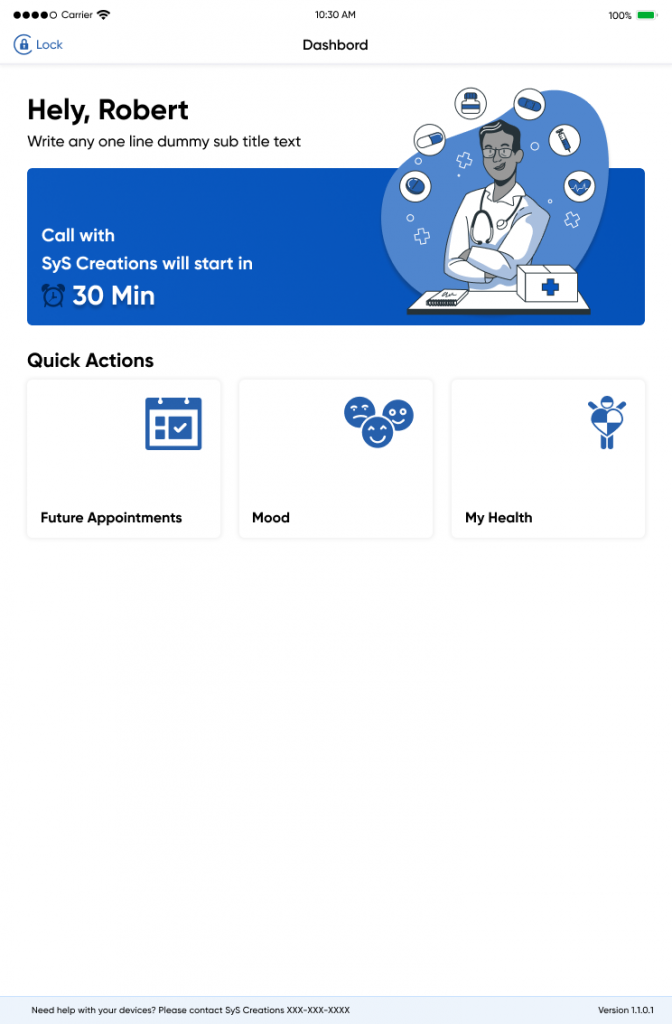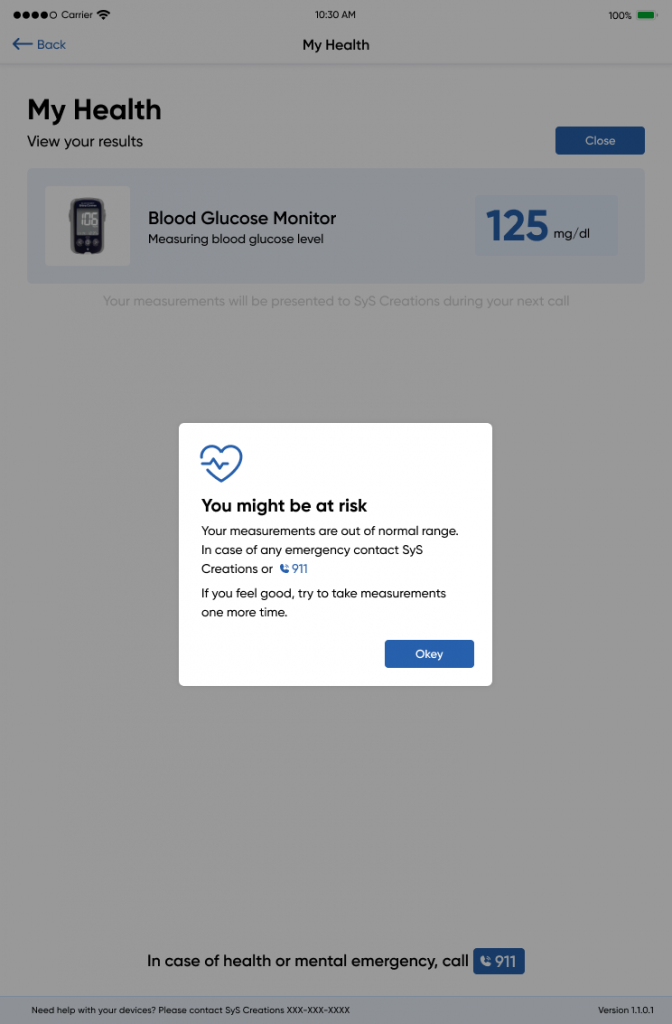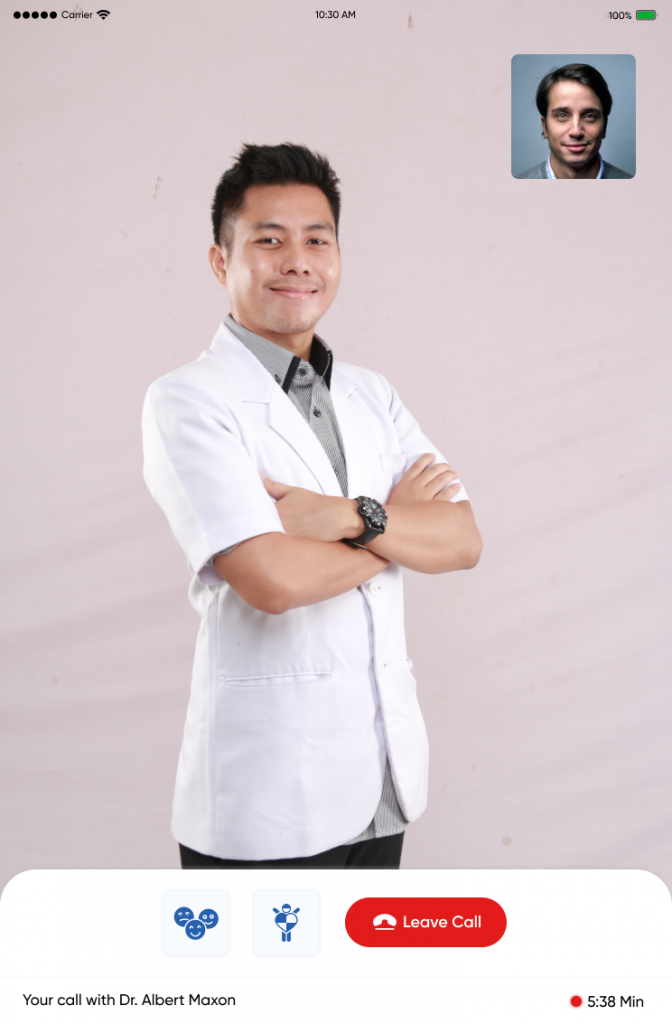Introduction
A US-based healthcare enterprise focused on senior care with their PACE (Program of All-inclusive Care for the Elderly) centers had a futuristic vision to let providers offer virtual senior care with easy access to real-time and historic vital body sign data of seniors such as sugar level, blood pressure and oxygen saturation.
The enterprise was very keen on achieving compatibility between IoT hardware and an online platform for accurate clinical data collection and sharing. In addition to this, telemedicine and ePrescription were also major requirements to make sure seniors are getting all-inclusive care from the comfort of their homes.
The whole agenda was to add convenience to senior care through telemedicine & ePrescription and add quality & accuracy to senior care through real-time vital body sign data access, collected by medical IoT devices.
1990
USA
$200K+
9
Challenges & Goals
Our frontend and backend teams built a mobile app for patients (seniors) and a web app for providers. Our IoT engineers work relentlessly with developers to make the mobile app IoT-enabled. Meaning, the mobile app connects to medical IoT devices via Bluetooth and fetches vital body sign data which are collected by those connected medical devices.
We achieved compatibility between software (senior care app) and IoT hardware (blood pressure monitor, pulse oximeter, blood glucose monitor), resulting in accurate vital body sign data collection and sharing with providers in real-time. We also empowered providers to schedule appointments, have virtual calls, see real-time and historic vital body sign data of seniors and write prescriptions with a scalable web app.
Overall, we built a tech infrastructure where the mobile app for seniors, web app for providers and medical IoT devices work in a collaborative manner to ensure providers can deliver data-driven quality senior care without being physically available under the same roof.
- Seamless and interconnected working of entire IT infrastructure (patient mobile app, provider web app and IoT medical devices) across all the PACE centers of the client
- The mobile app must support all recently rolled out and future versions of the Android updates.
- Achieving compatibility between IoT hardware (blood pressure monitor, pulse oximeter, blood glucose monitor) and software (patient mobile app) to make sure accurate and efficient data collection of vital body sign data
- Meeting HIPAA compliance requirements to facilitate secure ePHI collection, usage and sharing
- Advanced access control mechanism for distributing role-based access to the system across all PACE centers of the client
- The patient mobile app must be easily accessible to seniors with UI/UX designed that way, while keeping UI accessibility standards in the mind.
- Cloud technology must be leveraged for ensuring scalability, high uptime and faster disaster recovery.
- Providers must be able to schedule both one-on-one and group virtual meetings with patients (seniors) while also having the ability to write ePrescription.
- Be it vital body sign data recorded automatically by IoT medical devices or manually recorded data of seniors’ moods, providers must have access to this data under the profile of each senior. Not only this but providers must also be able to search the specific data of the specific date by applying filters.
- The senior care app must remind users to take medicine on time as seniors are more likely to miss their doses.
Our Engagement
We hand-picked the resources. The criteria we set was their past experience in dealing with healthcare IoT complexities. This made it possible for us to successfully form a team of UI/UX designers, IoT engineers, app developers, QA specialists, business analysts and compliance experts, having a combined experience of 50+ years specifically in the medical IoT niche.
“Knowledge delivers projects and mindset delivers success! But when knowledge and mindset meet, attitude takes birth and it has the power to change the world. Whatever we do, we do it for a purpose beyond sales. We do it for the whole community, who desperately want to see a makeover of our healthcare system. And this time, we did it for our seniors.”
Technologies We Utilized
The tech stack is the backbone of every great product. Building the right tech stack is the art of perfectly balancing the future needs and presently affordable technologies. To find this balance, we had long discussions with our CTO – before finally finalizing the following tech stack.
Figma
To engineer (and not only design) most accessible UI/UX of the app for the seniors and the most comprehensive UI/UX of the web app for providers
Angular
To build frontend of the solution with its cross-platform capabilities, improved speed & performance and excellent material design library
.Net
To build a solid backend of the solution which can easily be deployed and maintained and meet high-security standards
AWS
Used as a cloud computing solution, AWS delivers excellent app performance, highest-ever system availability, data security and easy scalability
Aurora PostgreSQL
To handle clinical data collected by IoT devices and demographic data of patients & providers associated with all PACE centers
Vonage
To embed the video call feature into the platform for actualizing easy communication options between seniors and providers
Project Media




Result
The result worth celebrating is a positive change in the lifestyle of our beloved seniors!
Most accessible senior care
Seniors now don’t need to travel to the PACE centers for meeting providers. All they have to do is accept the virtual appointment scheduled by the providers and connect to them virtually while being in the comfort of their homes.
Data-driven senior care
Since the app is IoT-enabled, it connects to IoT medical devices and fetches the vital body sign data collected by those medical devices. This allows providers to prepare care plans based on real-time and historic vital body sign data of each senior.
Secure care environment
Seniors are more prone to catching the virus when they travel to the clinic or community centers for receiving care. But now since seniors are able to seek quality care without leaving their homes, the risk factor gets normalized dramatically.
Time-saving for providers
With a web app, providers have a bird-eye view of all allocated patients, their real-time & historic clinical data, appointment data, medication etc, resulting in daily 2 hours of time-saving. Advanced filters save more time for providers by letting them discover desired data within seconds.
